Hominy Corn Porridge
Hominy Corn Porridge is a popular Jamaican breakfast and with a pressure cooker it’s made easy! The creamy mixture of the tender and chewy hominy kernels, coconut milk, cinnamon and nutmeg makes for a delicious meal that can also be eaten at any time of the day.
If you never heard of hominy before, you’d be surprised that you probably eaten it plenty of times. It’s what makes up the Southern staple grits in the U.S.A., and many Latin American dishes such as tacos and pozole (a Mexican stew). Even the snack food, corn nuts are made from hominy.
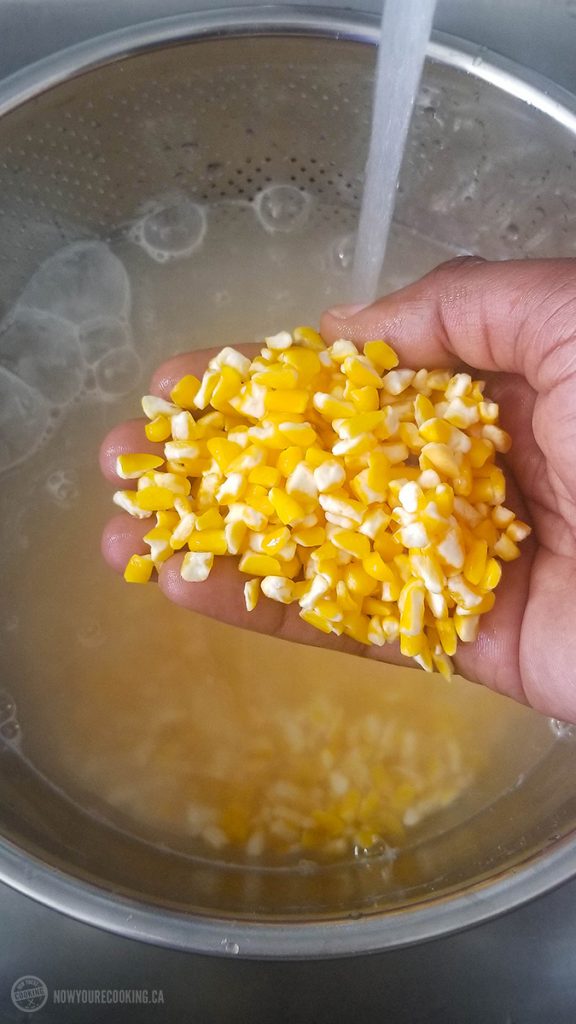
What is hominy?
Hominy is corn kernels (maize) that have been treated with alkali, through a process called nixtamalization. The first time I heard this term was from a chef in Puerto Morelos while he was showing us how to make corn tortillas with masa, and it’s a traditional culinary process that’s been used for thousands of years in the region known as Mexico today and other parts of Central America.
The corn (or maize) is soaked and cooked in an alkaline solution (e.g. limewater), washed and hulled. The nixtamalization process softens the hulls and allows the vitamin properties of corn, like B3, to be more properly absorbed by humans.
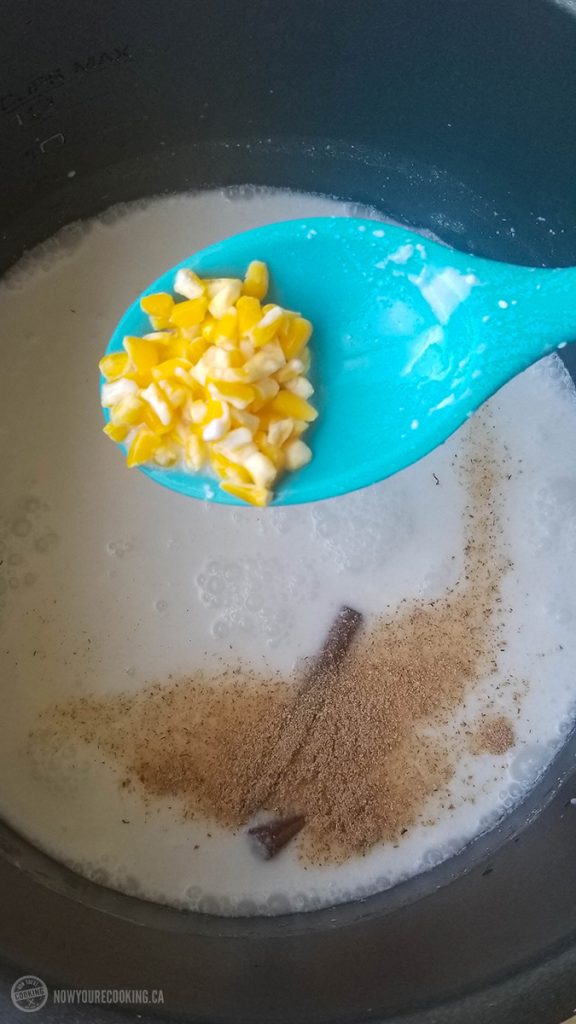
Unlike the finely ground hominy that you’d find when you make torillas with masa flour, this hominy corn porridge uses the dried, cracked hominy kernel and is rehydrated and cooked like you would beans.
What is hominy corn porridge?
Hominy corn porridge is a tasty Jamaican breakfast that can be a pleasant change from the more common cornmeal or oat variety. I loved when my mother would make a batch on Saturday mornings. Corn is a part of the history of this island nation because of the Taíno (Indigenous people of the Caribbean) skill with agriculture.
The stove-top method is what I grew up with, but omitting the overnight soak, and having this dish ready in under an hour by using a pressure cooker was a huge time-saver. I’ve noticed a lot of versions that add thickeners like flour and cornstarch, but I never had a need to since it thickens nicely on it’s own. If you like your porridge on the thinner side, feel free to add a bit more coconut milk (or other type of milk) to it after it finishes cooking. Personally, I like it more on the thicker side, so that it’s almost like a custard.
Although, I grew up eating this as part of my breakfast meals, that didn’t stop me from eating a bowl for dessert thanks to the sweetened condensed milk, and warming spices.
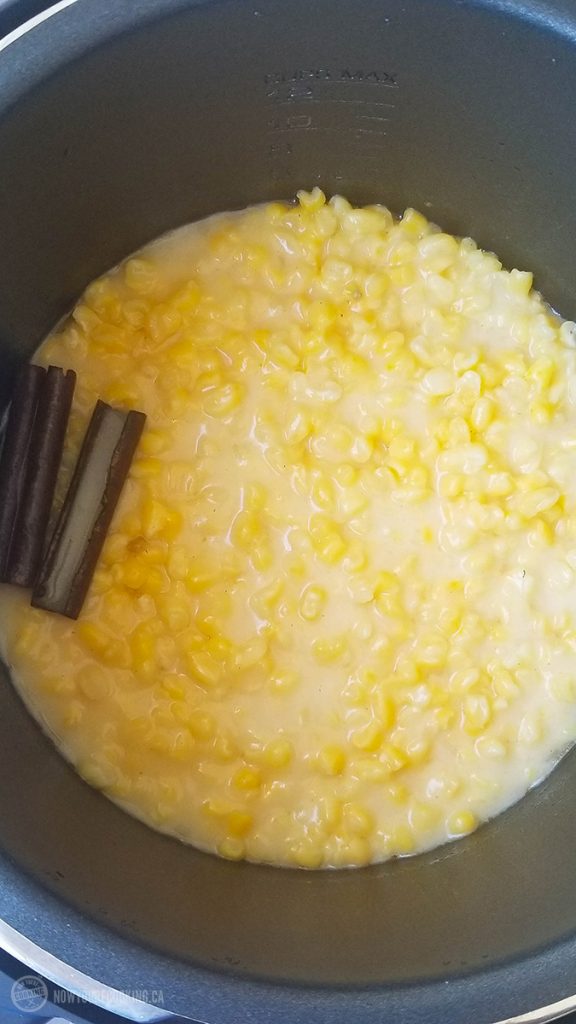
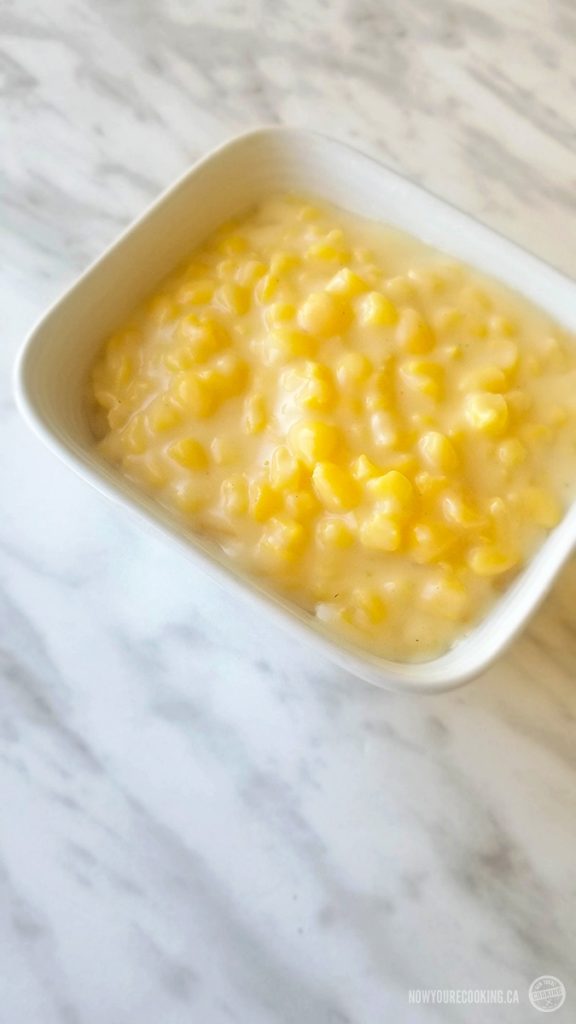
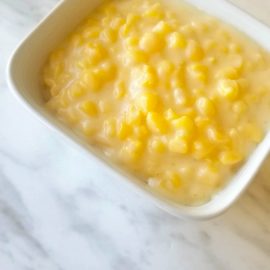
Hominy Corn Porridge
Equipment
- Pressure cooker
Ingredients
- 2 cups hominy corn
- 4.25 cups water (approx. 1 L)
- 1 can coconut milk (400 mL)
- 2 sticks cinnamon
- 1/2 tsp grated nutmeg
- 1/2 tsp salt
- 1/2 cup sweetened condensed milk (125 mL)
Instructions
- In a large bowl, rise and drain the hominy corn until the water runs clear (2-3 times)
- Add the corn, water, coconut milk, nutmeg, cinnamon sticks and salt to the pressure cooker pot and stir until combined.
- Secure lid, making sure the pressure-release valve is in the sealing position.
- Depending on your brand of pressure cooker, use the manual setting and set the cooking time for 30 minutes on high pressure.
- It will take about 15 minutes for it to come to pressure. After the cooking time is done flip the valve for natural release.
- Once the pressurized steam is released, open the lid. The mixture should be greatly reduced and thick. Stir in your sweetened condensed milk, vanilla and additional water in order to achieve your desired consistency. Remove cinnamon sticks.
- Cook for an additional 5 minutes on the saute setting. Serve warm.
Notes
- After the initial pressure cook, make sure the hominy is cooked properly. It should have an al dente consistency and “mush” only when you apply a good deal of pressure to it between your fingers.
- Hominy corn porridge will thicken as it cools. Adding extra liquid, such as water, coconut milk or evaporated milk, before serving will help thin it out.
- It takes about 15-20 minutes for a pressure cooker to “come to pressure”, so the 30 minute cook time won’t start until after this period finishes.


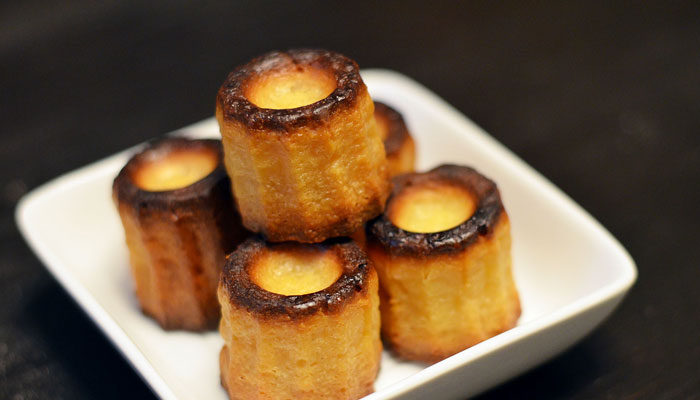
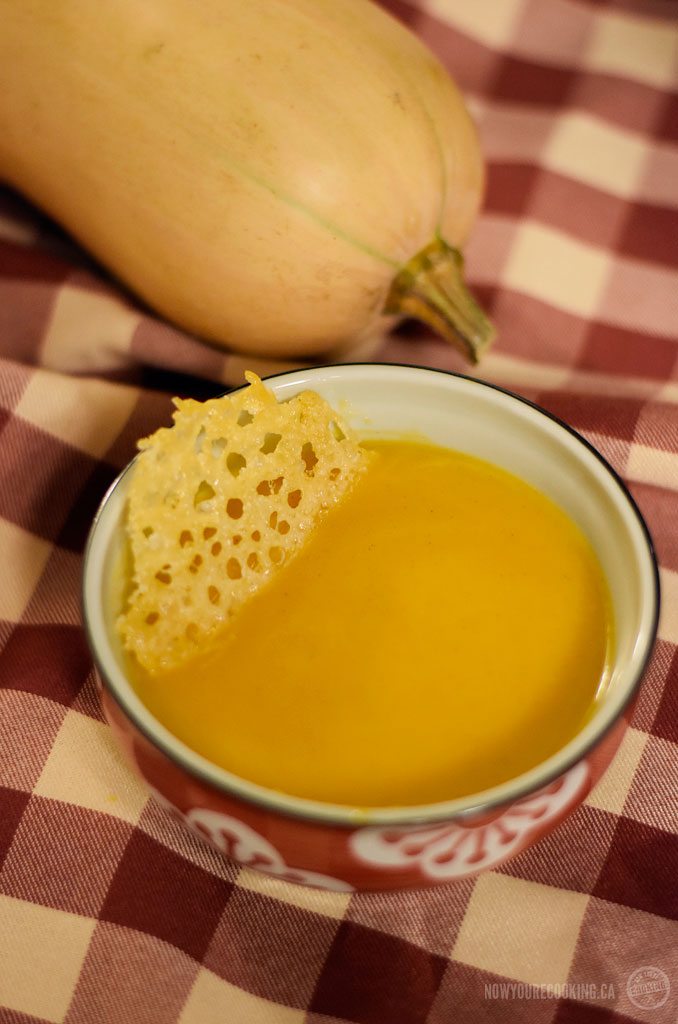

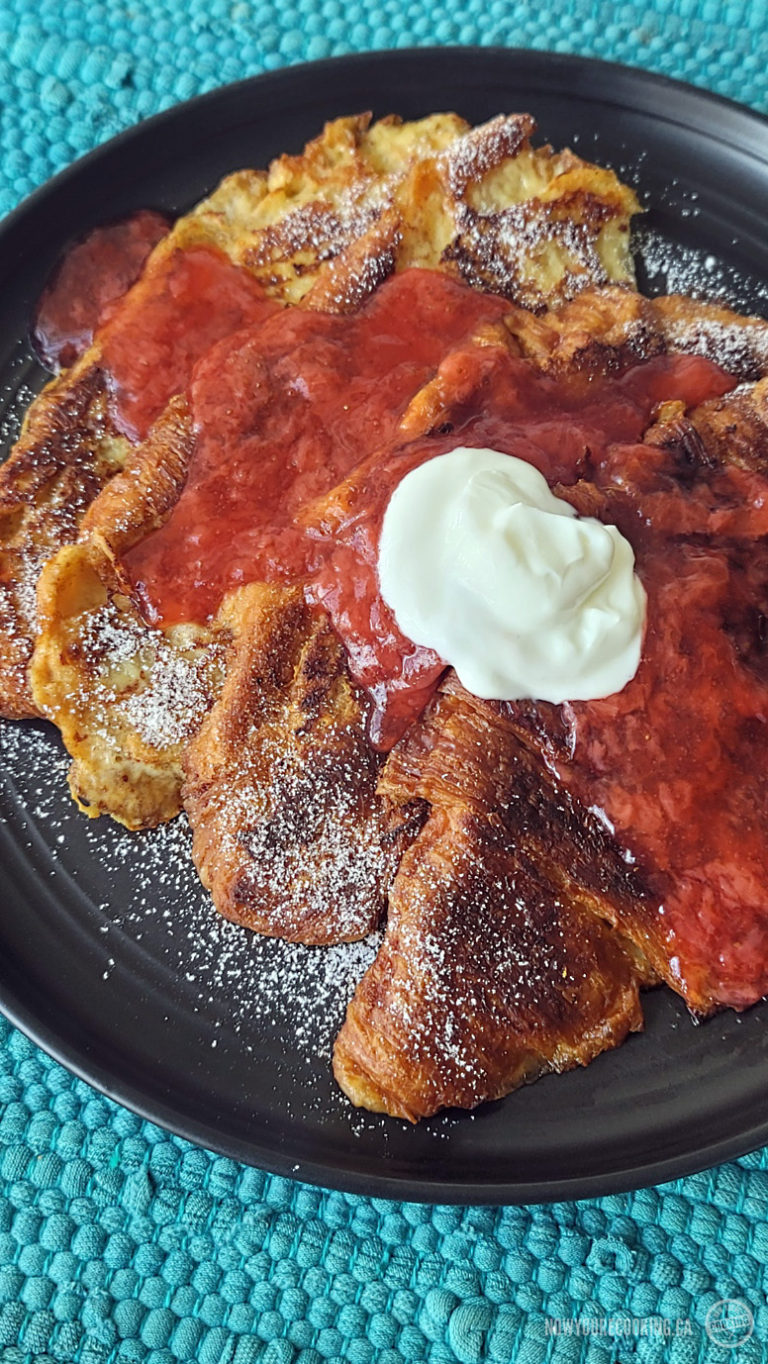

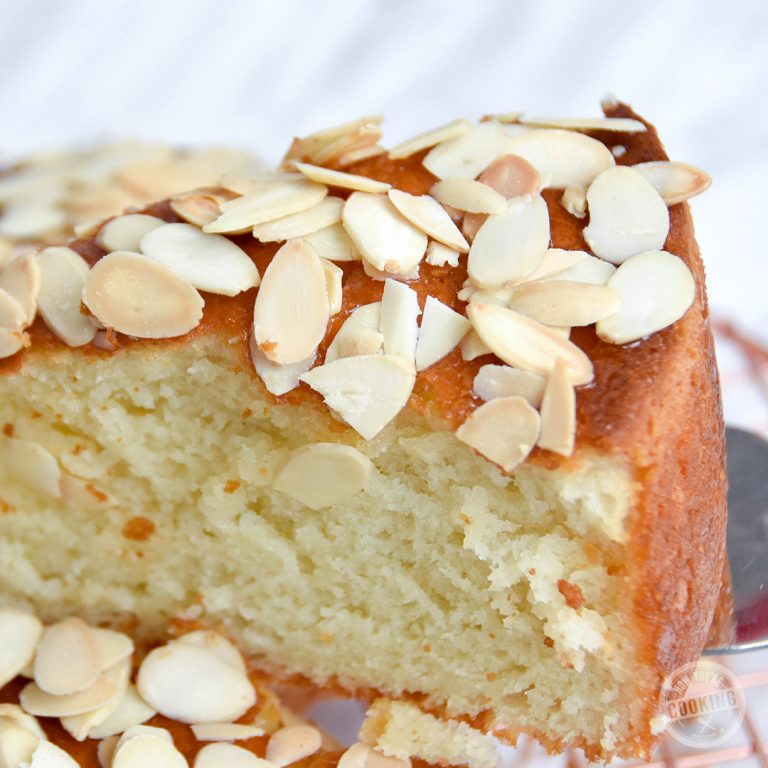
Good for you for going through the whole nixtamalizing process. I've watched a few videos of how it's done, but I've got to search for calcium hydroxide if I'm going to attempt that. Is that what you used?
If you're starting by using field corn that hasn't been processed, in order to adapt this recipe you can try nixtamalizing your hominy as you would, and then just use the whole kernels for the porridge. You may need to increase the cooking time a bit, but I'm not 100% sure which duration would give the best result. If you were able to re-dry the kernels, you can grind them so that they resemble cracked hominy corn, but the porridge should be okay with the whole kernels as well. I'm thinking you'd probably be able to try canned as well (since it's usually already processed), but then just use the stove-top.
This pandemic is unfortunate, but let me know if you're still having trouble finding cracked hominy and I'll see what I can do. Let me know how the recipe goes!